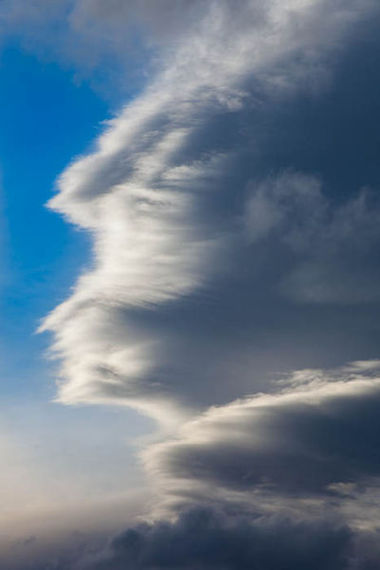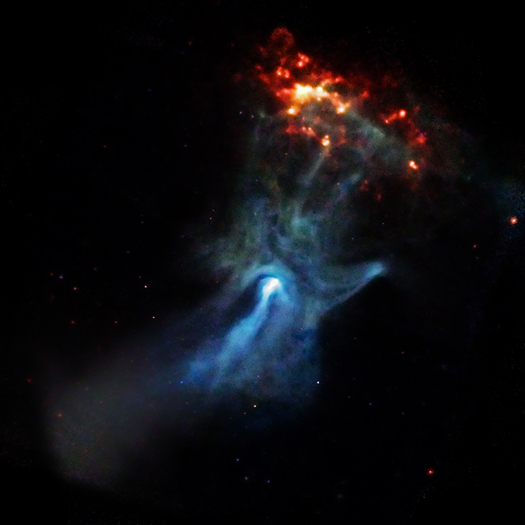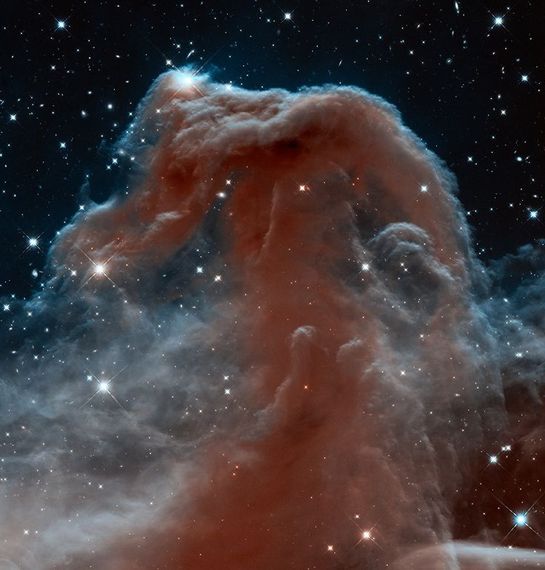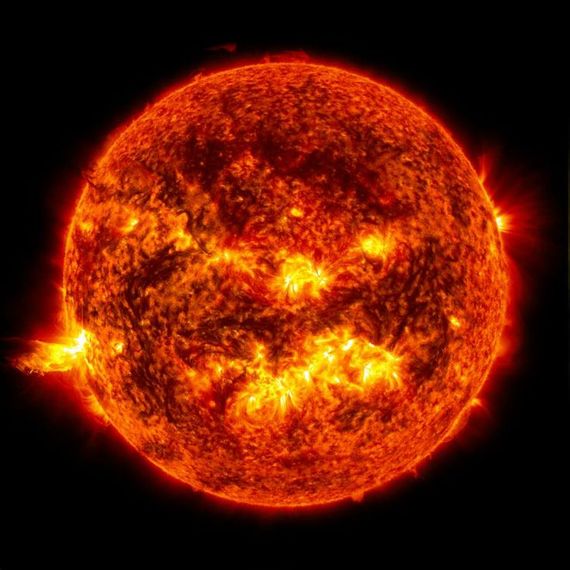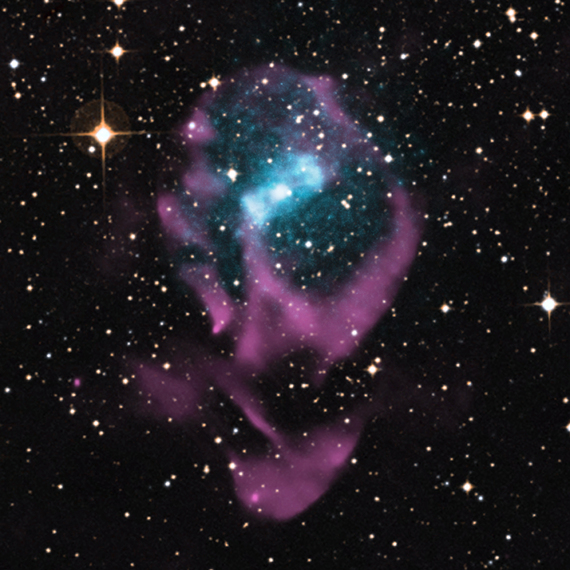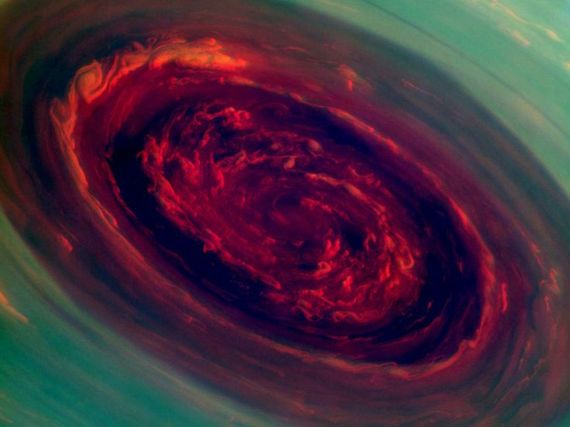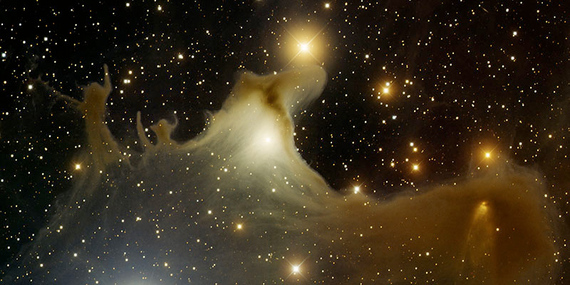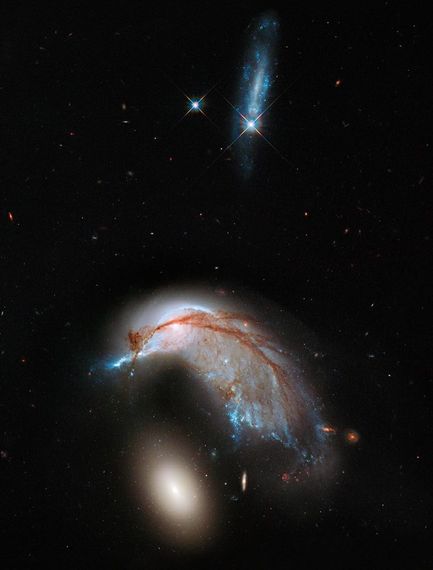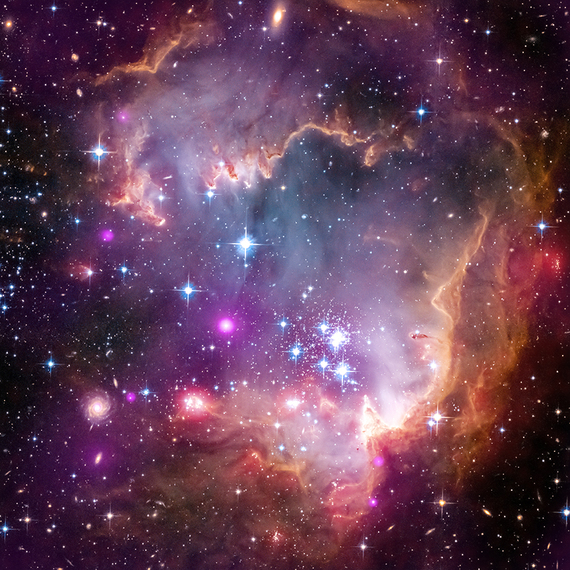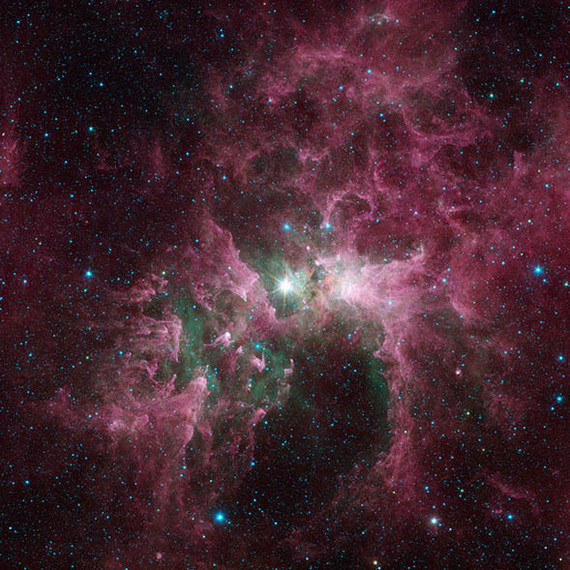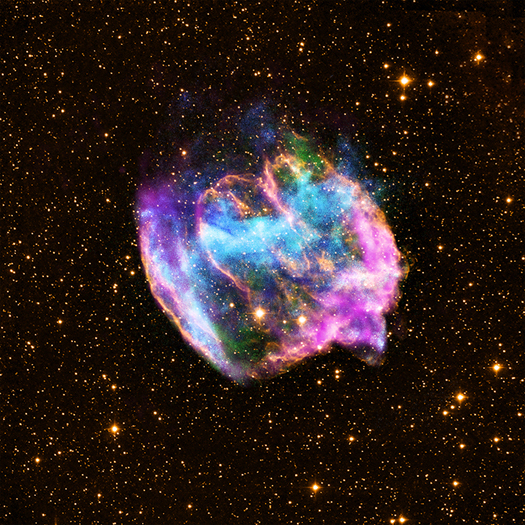Co-authored with Megan Watzke
A face in the clouds. Image: Frank Kovalchek, Wikimedia Commons
One of our favorite games to play with our kids (or just ourselves if we're being honest) is trying to find recognizable objects in the clouds as they pass by on a sunny day. Hey, does that one look like an elephant? No, how about a pirate ship?
The phenomenon where our brains find seemingly significant patterns in images or sounds has an actual name: pareidolia. Remember this one if you want to impress in your next round of Scrabble or trivia night.
For example, we might think we see a human on the face of the Moon, a lizard on Mars (see below), or recognize words when we play a recording in reverse. Even Leonardo da Vinci - a man of many talents - suggested that artists could use pareidolia as a creative exercise in painting.
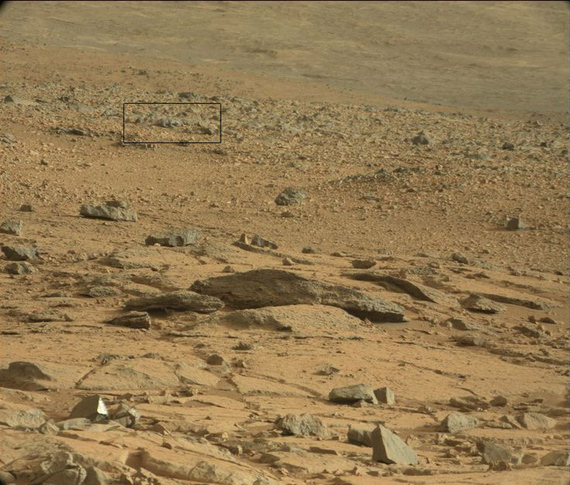
An image of Mars from NASA's Curiosity mission. The black box in the upper left shows a rock disguised as a lizard. Image: NASA/JPL-Caltech
One of our favorite places to play around with pareidolia is in images from space. Take a look at this image of the object known as B1509-58, which was released from NASA's Chandra X-ray Observatory back in 2009.
Not surprisingly, this object was nicknamed the "Hand of God," which quickly became a much more popular name than its much more boring astronomical handle. At the center of B1509 is a tiny dense spinning dead star known as a pulsar. This little dynamo is responsible for spewing energized particles that, in turn, are responsible for the "fingers" and other structures seen in this X-ray image. Even though scientists can explain this object's shape without any references to extremities or deities, pareidolia is alive and well.
There have been many posts about pareidolia in astronomy images and you can read some great examples here and here, and even see some artistic license used to manipulate NASA images.
Here we present our version of cosmic cloud watching, but with astronomy images that were released from various telescopes and observatories during 2013. Starting at the top, we've placed the strongest visual objects (to us). Towards the end of the list, you might have to get more creative to find some shapes.
So if your part of the world is tucked in with snow and cold, we offer you a bit of celestial pareidolia fun without having to brave the elements outside. Can you spy the horse's head?
Horsehead Nebula
This object is the most obviously named. The image of a horse's head and neck is iconic and has been published in many forms over the past 100 years since its discovery. Hubble's latest image of the Horsehead Nebula shows it in infrared light where we get to see pillars of gas and dust formed by stellar winds and radiation.
Image: NASA, ESA, and the Hubble Heritage Team (STScI/AURA)
What we see: a horse's head and neck.
Our Sun
Our local star experiences weather, but solar weather, or space weather, is not like Earth's--that is, there's no rain, snow, or sleet. Rather, the weather on the Sun comes from the dance and play between huge tentacles of hot plasma and magnetic fields that stretch out from the solar surface. This results in enormous storms of charged particles that erupt from the Sun.
Image: NASA/SDO
What we see: a face with ears.
Circinus X-1
A system where a neutron star is in orbit around a star several times the mass of the Sun, about 20,000 light years from Earth, within our Milky Way Galaxy.The neutron star in Circinus X-1 is 4,600 years old - a pretty young find for this type of object.
Image: X-ray: NASA/CXC/Univ. of Wisconsin-Madison/S.Heinz et al; Optical: DSS; Radio: CSIRO/ATNF/ATCA
What we see: A skull!
A Storm on Saturn
Saturn is the second largest planet in the Solar System, surpassed in size only by Jupiter. Around Saturn's North Pole, a storm in its atmosphere is raging. Scientists estimate that the hurricane's eye is about 20 times larger than typical hurricanes on our own planet, with Saturn's weighing in at about 1,250 miles (2,000 kilometers) wide. The storm shows a strange six-sided weather pattern known as the hexagon.
Image: NASA/JPL-Caltech/SSI
What we see: A red rose
Ghost Nebula
VdB 141, also known as the Ghost Nebula, is a reflection nebula in which interstellar dust shines in the reflected light of nearby stars. In some parts of the nebula, the dust accumulates to form dense clouds of gas from which it is thought young stars are born.
Image: T.A. Rector (Univ. of Alaska Anchorage) & H. Schweiker (WIYN & NOAO/AURA/NSF)
What we see: a flying ghost
Colliding Galaxy Pair
What looks like a celestial hummingbird is really the result of a collision between a spiral and an elliptical galaxy at a whopping 326 million light- years away. The flat disk of the spiral NGC 2936 is warped into the profile of a bird by the gravitational tug of the companion NGC 2937. The object was first cataloged as a "peculiar galaxy" by Halton Arp in the 1960s. This interacting galaxy duo is collectively called Arp 142.
Image: NASA, ESA, and the Hubble Heritage Team (STScI/AURA)
What we see. Definitely a penguin's head coming out of the water.
Sh2-68
When a star like our Sun runs out of its nuclear fuel, it begins to expel its outer layers. The star (seen here as the blue dot in the middle of the blue gas) illuminates the ejected material in mesmerizing patterns and structures, known as a planetary nebula. Sh2-68 is thought to be a planetary nebula that is around 45,000 years old.
Image: T.A. Rector (Univ. of Alaska Anchorage) & H. Schweiker (WIYN & NOAO/AURA/NSF)
What we see: A fiery head, or a "flaming skull"
NGC 602
The Small Magellanic Cloud - also known as the SMC - is one of the closest galaxies to the Milky Way. Because the SMC is so close and bright, it offers a chance to study phenomena that are difficult to examine in more distant galaxies. This image, a composite of X-ray, infrared and optical data, shows a cluster of bright young stars with masses similar to that of our Sun.
Image: X-ray: NASA/CXC/Univ.Potsdam/L.Oskinova et al; Optical: NASA/STScI; Infrared: NASA/JPL-Caltech
What we see: Many people see a face, but we see a Pac man eating its dots.
Eta Carinae
Eta Carinae is a mysterious, extremely bright and unstable star located a mere stone's throw - astronomically speaking - from Earth at a distance of only about 7,500 light years. Eta Carinae is about 100 times bigger than our sun and is burning about one million times brighter than our own star. Radiation and stellar winds from Eta Carinae are sculpting and destroying the surrounding nebula, shown here in this infrared image of its gas and dust.
Image: NASA/JPL-Caltech
What we see. A person, in the carved out green areas inside the nebula.
W49b
Supernova remnants--that is, the debris field left behind after the explosion--are like snowflakes: No two are ever exactly the same. W49b has evolved into an unusual shape. Its expanding shell of gas contains important elements such as sulfur and silicon, oxygen and iron. These elements, which are critical to our existence here are Earth, were created both when the star was still living and in the explosion itself.
Image: X-ray: NASA/CXC/MIT/L.Lopez et al.; Infrared: Palomar; Radio: NSF/NRAO/VLA
What we see: Could be a bat?
Are you on Pinterest? Pin horseheads and faces from http://www.pinterest.com/kimberlyarcand/2013-interesting-astronomy-images/
Kimberly Arcand and Megan Watzke are co-authors of Your Ticket to the Universe: A Guide to Exploring the Cosmos published by Smithsonian Books (2013). You can view some of these images, and many others, in their book.

